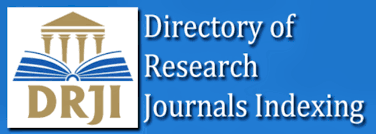Performance Evaluation of Key Performance Indicators for UMTS Networks in Calabar, Nigeria
DOI:
https://doi.org/10.30574/gscarr.2022.10.1.0023Keywords:
Call setup time, Call setup success rate, Drop call rate, Handover success rate, Call setup timeReceived Signal Code Power, Signal-to-Interference ratioAbstract
For appropriate regulation and quality assurance, continuous monitoring of cellular network services is necessary. A drive test measurement was carried out in Calabar, to investigate four UMTS networks, taking cognizance of Call Setup Success Rate (CSSR), Drop Call Rate (DCR), Handover Success Rate (HOSR), Call Setup Time (CST), Received Signal Code Power (RSCP) and Signal-to-Interference Ratio (Ec/Io). The collected data was analyzed and the obtained results was compared with the performance threshold levels of the Nigerian Communication Commission (NCC). The four networks had excellent CST, with MTN leading, followed by Airtel, then 9mobile and Globacom. For CSSR, Airtel had excellent performance, as there was no blocked call. This was followed by MTN and Globacom. 9mobile failed in CSSR as it was below the NCC recommended benchmark. There was no drop call in Airtel, MTN and 9mobile, but Globacom’s performance was below the recommended threshold for dropped calls. For HOSR, the four networks showed excellent performance as they were able to handover calls between cells, as recommended by NCC. Considering the RSCP, the four networks displayed excellent services as subscribers experienced good voice and data services. However, the four networks had poor coverage quality (Ec/Io), the worst, being displayed by MTN. This shows that the equipment capability of the networks is low. The network operators are advised to monitor their services often, so as to optimize their networks for a better Quality of Service (QoS).
Metrics
References
Benisha M, Prabu RT, Bai T. Evolution of mobile generation technology. International Journal of Recent Technology and Engineering. 2019; 7(5): 449-454.
Sireesha BV, Varadarajan S, Vivek, Naresh. Increasing of Call Success Rate in GSM Service Area using RF Optimization. International Journal of Engineering Research and Applications. 2011; 1(4): 1479-1485.
Ekejiuba CO, Adebayo AA, Adeoye OS. Assessment of GSM Network Failures, Quality of Service Evaluation and its Impacts on E-Learning. International Journal of Scientific and Applied Science. 2015; 1(5): 119-123.
Ozovehe A, Usman AU. Performance analysis of GSM networks in Minna metropolis of Nigeria. Nigerian Journal of Technology. 2015; 34(2): 359-367.
Lawal BY, Ukhurebor KE, Adekoya MA, Aigbe EE. Quality of service and performance analysis of a GSM network in Eagle Square, Abuja and its environs, Nigeria. International Journal of Scientific and Engineering Research. 2016; 7(8): 1992-1999.
Pooja N, Anitha R, Hanchinal CS. Optimized path loss model for the effects of environmental factors on mobile signal strength. International Research Journal of Engineering and Technology. 2018; 5(4): 4513-4516.
Kavacky M, Chromy AA, Krulikovska E, Pavolic P. Quality of Service issues for Multiservice IP networks. International Conference on Signal Processing and Multimedia Applications, Milan, Italy. 2009; 185-188.
Kiyea C. Performance Analysis of Quality of Service of GSM/CDMA Mobile Networks in Zaria. International Journal of Science and Research. 2014; 3(10): 1247-1253.
Adegoke AS, Babalola IT, Balogun WA. Performance Evaluation of GSM Mobile System in Nigeria. Pacific Journal of Science and Technology. 2008; 9(2): 436-441.
Abdulkareem HA, Tekanyi AMS, Kassim AY, Muhammad ZZ, Almustapha MD, Abdu-Aguye UF, Adamu H. Analysis of a GSM Network Quality of Service using Call Drop Rate and Call Setup Success Rate as Performance Indicators. Zaria Journal of Electrical Engineering Technology. 2020; 9(1): 113-121.
Tekanyi AMS, Abdulkareem HA, Muhammad ZZ, Analysis of GSM Network Quality of Service using Call Setup Failure Rate and Handover Failure Rate Indices, Telecommunications and Radio Engineering. 2019; 78(16): 1471-1481.
Obi E, Ekah U, Ewona I. Real-time assessment of cellular network signal strengths in Calabar. International Journal of Engineering Sciences & Research Technology. 2021; 10(7): 47-57.
Idigo VE, Azubogu ACO, Ohaneme CO, Akpado KA. Real time assessment of QoS of mobile cellular networks in Nigeria. International Journal of Engineering Inventions. 2012; 1(6): 64-68.
Emeruwa C, Ekah UJ. Pathloss model evaluation for Long Term Evolution in Owerri. International Journal of Innovative Science and Research Technology. 2018; 3(11): 491-496.
Adelakun AO, Lawal BY, Adekoya MA, Ukhurebo KE. Chaotic assessment of the key performance indicators for a GSM Network congestion in an election period in Nigeria. Nigeria Journal of Pure & Applied Physics. 2020; 9(1): 28–33.
Ekah UJ, Emeruwa C. Guaging of key performance indicators for 2G mobile networks in Calabar, Nigeria. World Journal of Advanced Research and Reviews. 2021; 12(2): 157-163.
Emeruwa C, Ekah UJ. Investigation of the variability of signal strength of wireless services in Umuahia, Eastern Nigeria. IOSR Journal of Applied Physics. 2018; 10(3): 11-17.
Popoola SI, Atayero AA, Faruk N, Badejo JA, Data on the key performance indicators for quality of service of GSM networks in Nigeria, Data in Brief. 2018; 16: 914-928.
Ajayi OT, Onidare SO, Ayeni AA, Adebowale QR, Yusuf SO, Ogundele A, Performance Evaluation of GSM and WCDMA Networks: A Case Study of the University of Ilorin. International Journal on Electrical Engineering and Informatics. March 2021; 13(1): 87-106.
Ekah UJ, Emeruwa C, A comparative assessment of GSM and UMTS Networks, World Journal of Advanced Research and Reviews, 2022; 13(1): 187-196.
Downloads
Published
How to Cite
Issue
Section
License

This work is licensed under a Creative Commons Attribution-NonCommercial-ShareAlike 4.0 International License.












